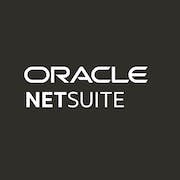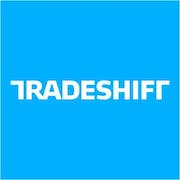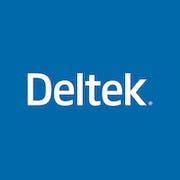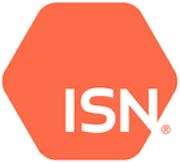Are you looking for guidance on selecting the best vendor management software? Check out our comprehensive buyer's guide for expert insights designed to help you make an informed decision.
Vendor management has become one of the most critical aspects of successful operations. Whether you are a small business or a large corporation, managing relationships with your vendors is crucial in maintaining a consistent supply chain. However, as the number of vendors and contracts increases, managing these relationships can become a significant challenge. That's where vendor management software comes in and by implementing a robust vendor management solution, businesses can streamline their processes, reduce risk, and increase efficiency. In this guide, we will explore the key features and benefits of this advanced software, helping you to make an informed decision when choosing the right one for your business.
What is vendor management software?
Vendor management software (VMS) is a comprehensive tool used by businesses to manage the relationships they have with their suppliers and vendors. It is a solution that streamlines vendor selection, contract management, and performance tracking, allowing organizations to optimize their procurement processes and ensure better supply chain management. Thiscloud-based system that provides a centralized platform for businesses to manage their vendor relationships from one place.
Common use cases of VMS include:
- Sourcing: It allows effective and efficient finding and onboarding of new vendors.
- Contract management: It enables streamlining of the process of vendor contract creation and management and ensuring contractual compliance.
- Vendor performance management: Monitoring vendor performance metrics such as delivery time, quality, and support, and ensuring vendors meet established service level agreements (SLAs).
- Spend management: Analyzing purchasing and vendor spend, reducing costs, and increasing profitability. 79% of organizations are likely to achieve their revenue goals better than the average in their industries if they have high-performing vendor management workflows.
- Risk management: Monitoring risks associated with vendor relationships, such as non-compliance with policies, security breaches, or financial instability.
- Reporting: Generating reports and analytics to help businesses make informed decisions about their vendor management strategies.
VMS is commonly used by organizations in various industries, including retail, construction, healthcare, and finance, among others. Companies that depend on a stable and reliable supply chain, such as those in manufacturing, often benefit from VMS.
Managing vendor relationships has become extremely complex, and VMS tools have made the process much easier with several benefits which include:
- Centralized management: Itprovides a single platform for managing all vendor-related activities, contracts, and contacts, which saves time and avoids confusion.
- Improved vendor performance: It alsoprovides real-time analytics and insights that help you monitor vendor performance, track compliance, and improve relationships.
- Cost savings: A vendor management platform enables businesses to negotiate better rates and terms with vendors, identify cost-saving opportunities, and reduce vendor management overheads. According to Richard B.Renckly’s Human Resources, employing a vendor management system can lower internal and labor expenditures by 20-30%.
- Risk management: The softwarehelps mitigate vendor risks by enabling businesses to track compliance, monitor the supply chain, and manage vendor-related data.
- Efficient workflow: Vendor management software solution automates several vendor-related processes, such as procurement, onboarding, and offboarding, which improves operational efficiency and reduces errors.
- Regulatory compliance: A vendor tool ensures businesses comply with industry regulations and standards by maintaining comprehensive records of vendor-related activities.
10 key features of vendor management software
This application comes with a wide variety of essential features and here are 10 of the most common ones to look out for:
- Vendor database management.
- Vendor performance tracking.
- Automated vendor registration system.
- Vendor scorecards and reports.
- Contract lifecycle management.
- Integration with procurement and accounting systems.
- Risk management and compliance monitoring.
- Document and file management for vendor contracts and agreements.
- Streamlined communication channels with vendors.
- Analytics and forecasting tools for vendor performance optimization.
Things to consider when investing in a vendor management tool?
With so many VMS options available on the market, businesses may want to carefully consider several factors before selecting one. Additionally, taking the time to thoroughly train your team on the solution will pay off in the long run. Below we will outline some factors to look into:
- The first and foremost factor to consider is the scope of the VMS solution. Does it support the organization's vendor management needs? Is it flexible enough to accommodate future vendor management requirements? Does it integrate with existing systems? It's essential to look for a comprehensive and scalable VMS solution that offers customization and flexibility to adapt to the changing business needs.
- The second factor is user-friendliness. The solution should have an intuitive interface that is easy to navigate and use. It should allow vendors to quickly submit requests and deliverables while enabling the organization's personnel to collaborate, approve, and track vendor activities without undue effort. A user-friendly package ensures faster ROI and increased adoption by employees and vendors.
- The third factor is data security and compliance. Your chosen program should comply with industry-standard security and compliance regulations, such as the General Data Protection Regulation (GDPR) and the Health Insurance Portability and Accountability Act (HIPAA). It should also support aggregation and analysis of vendor data to help organizations evaluate vendor risks and compliance.
- The fourth factor is reporting and analytics. The system should provide customizable reports and analytics dashboards to help organizations evaluate vendor performance, usage patterns, costs, and compliance. A comprehensive data manipulation and visualization tools can provide actionable insights, facilitate decision-making, and provide a competitive advantage in the market.
- The fifth factor is support and maintenance. The VMS app should come with a comprehensive support and maintenance contract to address any issues that may arise during the implementation and operation phases. It should also offer training and continuous education resources to help employees and vendors make the most of the software.
Industry trends for vendor management software
It is vital for organizations to build strong vendor management capabilities. This year, VMS providers are expected to deliver a wide range of features and functionalities that go beyond just managing vendors and contracts. Below are some of the biggest VMS trends to look out for:
#1. Intelligent automation:
VMS providers are expected to increasingly incorporate intelligent automation in their platforms to automate routine tasks, minimize errors, and increase efficiency.
#2. Vendor performance management:
With increased focus on vendor performance, VMS solutions will continue to emphasize on real-time monitoring of vendor performance. The software should be able to track key performance indicators and provide actionable insights.
#3. Contract analytics:
The ability to extract valuable insights from contract data will be crucial for organizations. VMS providers will continue to focus on developing contract analytics capabilities to help organizations uncover patterns and insights that can optimize vendor relationships.
#4. Supply chain visibility:
In 2024, VMS solutions will need to provide better supply chain visibility. Organizations will need to track the entire supply chain to ensure timely delivery of goods and services while minimizing risks.
#5. Mobile compatibility:
With an increasing number of employees working remotely, VMS providers are expected to deliver mobile-compatible solutions, giving access to key features on-the-go.
As organizations face increasing regulatory pressures and supply chain complexities, VMS technology can help companies ensure regulatory compliance. Organizations need to prioritize investing in these software tools to ensure transparency and effective vendor management.
Conclusion
Successful implementation requires not only the right technology but also a strategic approach to change management and continuous improvement. Invest time in training your team, defining clear processes, and regularly reviewing your vendor management practices to ensure you are maximizing the benefits of your tool. By leveraging the capabilities of vendor management software, your organization can build stronger, more productive partnerships, ultimately achieving greater success andwill lead to better outcomes for everyone involved.







